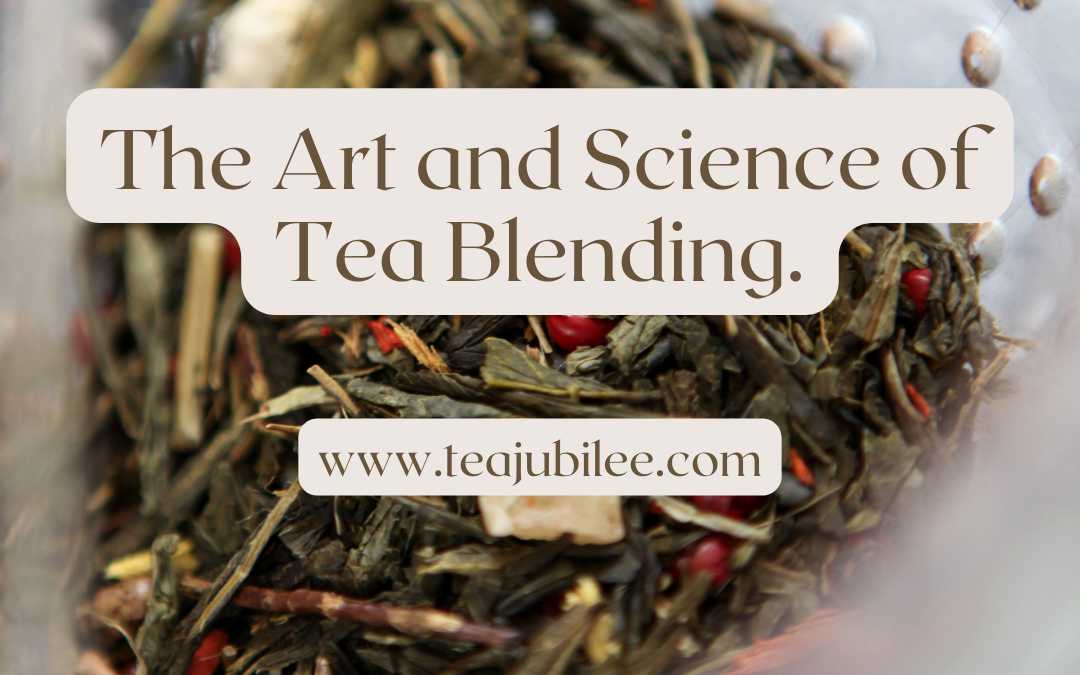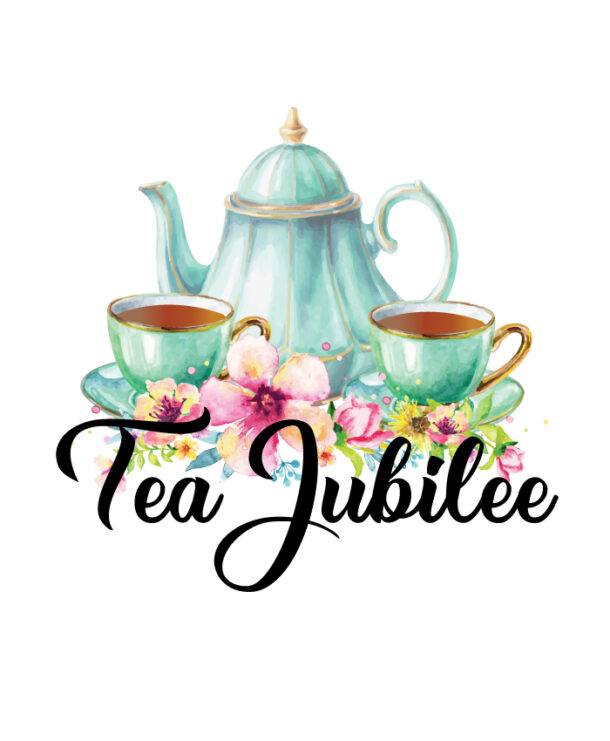==================
A Caveat and Affiliates
First off, a little caveat: within my articles you will find affiliate links, meaning if you buy them, I get a small commission. Your cost is not affected. In addition, I am an Amazon Associate and I earn from qualifying purchases on Amazon.
And yes, if I say that I recommend a product here, it means I truly believe it is a good product. I refuse to recommend any product that I have not researched and believe to be a good value.
Even better, I provide you with a very clear picture of the product, it’s use, and the probable value.
Earning your trust is important to me. I run this website myself and the commissions and donations help support the site.
Sound reasonable and fair enough? Let’s continue to the article.
==================
Contents
Tea Blending: The Art and Science of Creating Unique Tea Blends
Tea blending is a fascinating art that involves mixing different teas to create unique and flavorful blends. It has been practiced for centuries and has become increasingly popular in recent years.
Tea blending allows tea makers to create new and exciting flavors by combining different types of tea leaves, herbs, spices, and fruits.
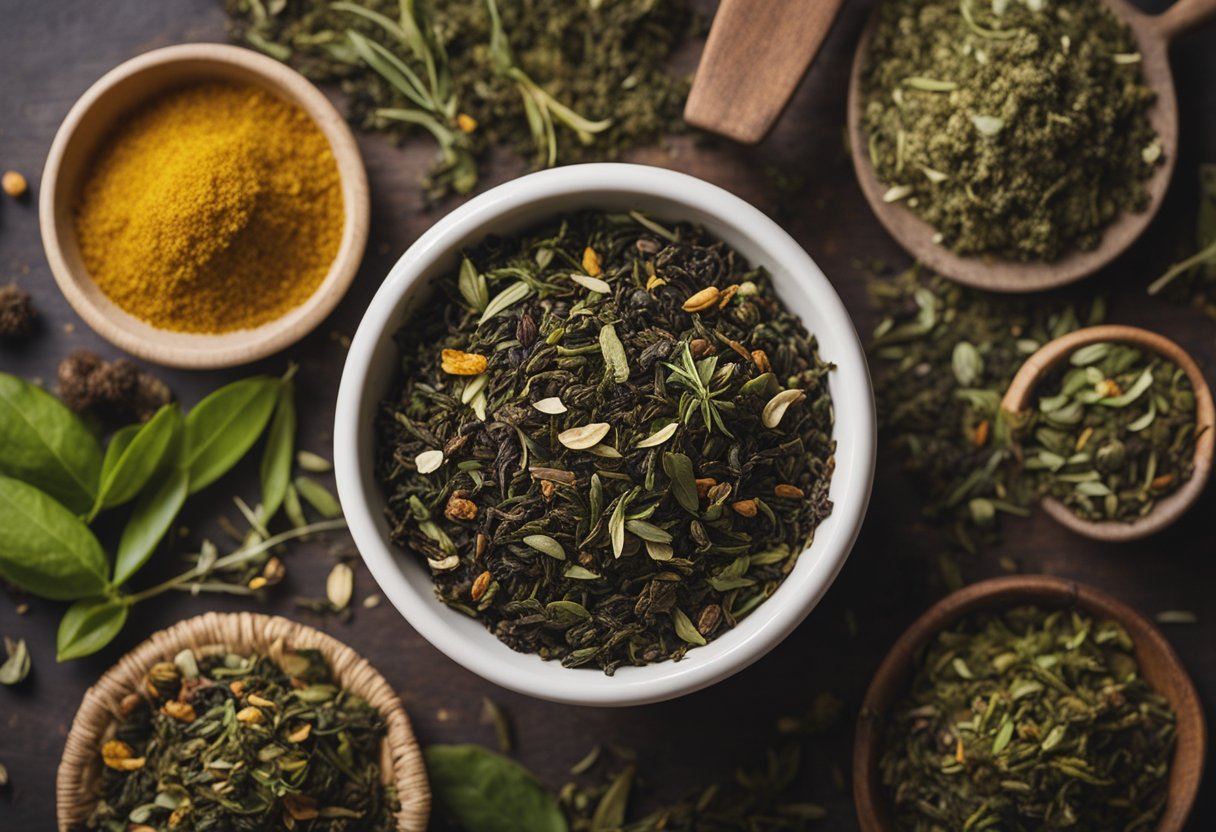
One of the main benefits of tea blending is that it allows tea makers to create blends with a specific flavor profile. For example, a tea maker might blend a black tea with a fruity herbal tea to make a sweet and tangy blend perfect for iced tea.
Additionally, tea blending can create blends with specific health benefits. For example, a mixture of green tea and mint can aid digestion, while a mix of chamomile and lavender can promote relaxation and sleep.
Tea blending is a complex process that requires knowledge and skill. Tea makers must carefully select the teas and other ingredients for the blend and experiment with different ratios and brewing methods to create the perfect mix.
Despite the challenges, tea blending is a rewarding process that allows tea makers to create unique and delicious teas enjoyed by people worldwide.
History of Tea Blending
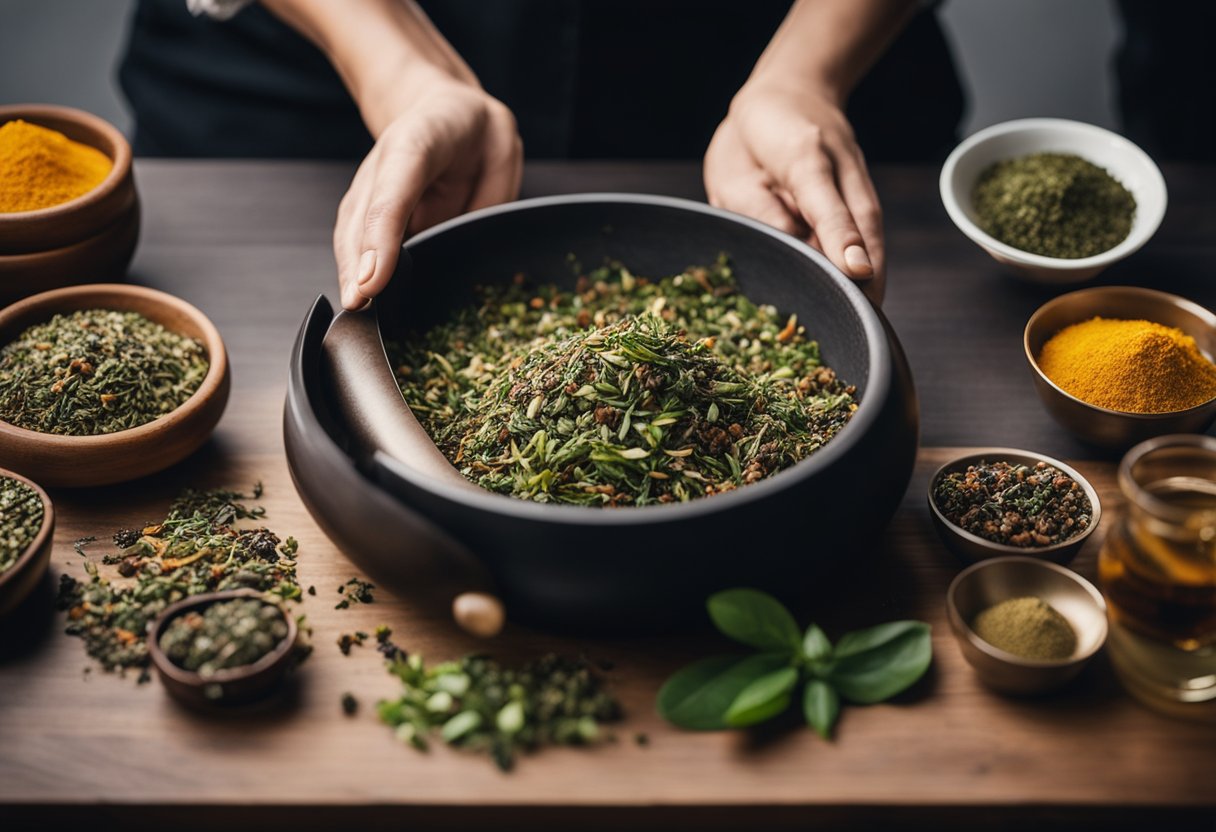
Cultural Significance
Tea blending has been an important cultural practice in many parts of the world for centuries. In China, for example, tea blending dates back to the Tang Dynasty (618-907 CE), when tea was mixed with various herbs and spices to create medicinal brews.
In India, tea blending became popular during the British colonial period when Indian tea was blended with Chinese tea to create the famous English Breakfast blend.
Tea blending has also played an important role in Japanese tea culture. In Japan, tea is often blended with roasted rice to create genmaicha, a popular tea for its nutty flavor and aroma.
Evolution Over Time
Over time, tea blending has evolved to meet consumers’ changing tastes and preferences. In the 19th century, for example, tea blending became more sophisticated as tea merchants began experimenting with different tea blends from different regions.
Tea blending is a highly specialized art form that requires extensive knowledge of tea varieties, flavor profiles, and brewing techniques. Tea blenders carefully select and blend teas from different regions to create unique and complex flavor profiles that appeal to many consumers.
In conclusion, tea blending has a rich and diverse history that spans many cultures and centuries. Tea blending continues to evolve today as tea merchants and blenders experiment with new blends and flavor profiles to meet consumers’ changing tastes and preferences.
Types of Tea for Blending
Black Tea Varieties
Black tea is a popular blend base due to its robust flavor. Many different varieties of black tea are available, each with its unique flavor profile.
Some popular black tea varieties for blending include:
- Assam: A strong and malty tea from India, often used as a base for breakfast blends.
- Ceylon: A medium-bodied tea from Sri Lanka with a bright and citrusy flavor, it is often used in blends with fruit flavors.
- Keemun: A Chinese tea with a winey and fruity flavor often used in floral or citrus blends.
Green Tea Varieties
Green tea is light and delicate and can subtly flavor tea blends. Some popular green tea varieties for blending include:
- Sencha is a Japanese tea with a vegetal and grassy flavor often used in blends with fruit flavors.
- Dragonwell is a Chinese tea with a nutty and sweet flavor often used in floral or citrus blends.
- Gunpowder: A Chinese tea with a smoky and earthy flavor that is often used in blends with mint or ginger flavors.
Herbal and Floral Additions
Herbal and floral additions can add a unique flavor and aroma to tea blends. Some popular herbal and floral additions for blending include:
- Chamomile is a floral herb with a sweet and calming flavor often used in blends with fruit flavors.
- Lavender is a floral herb with a sweet and fragrant flavor. It is often used in blends with citrus or mint flavors.
- Hibiscus: A tart and fruity flower that is often used in blends with fruit flavors.
Overall, many different types of tea can be used for blending, each with its unique flavor profile. Tea blenders can create a wide range of delicious and exceptional tea blends by experimenting with various combinations of tea and flavorings.
Fundamentals of Tea Blending
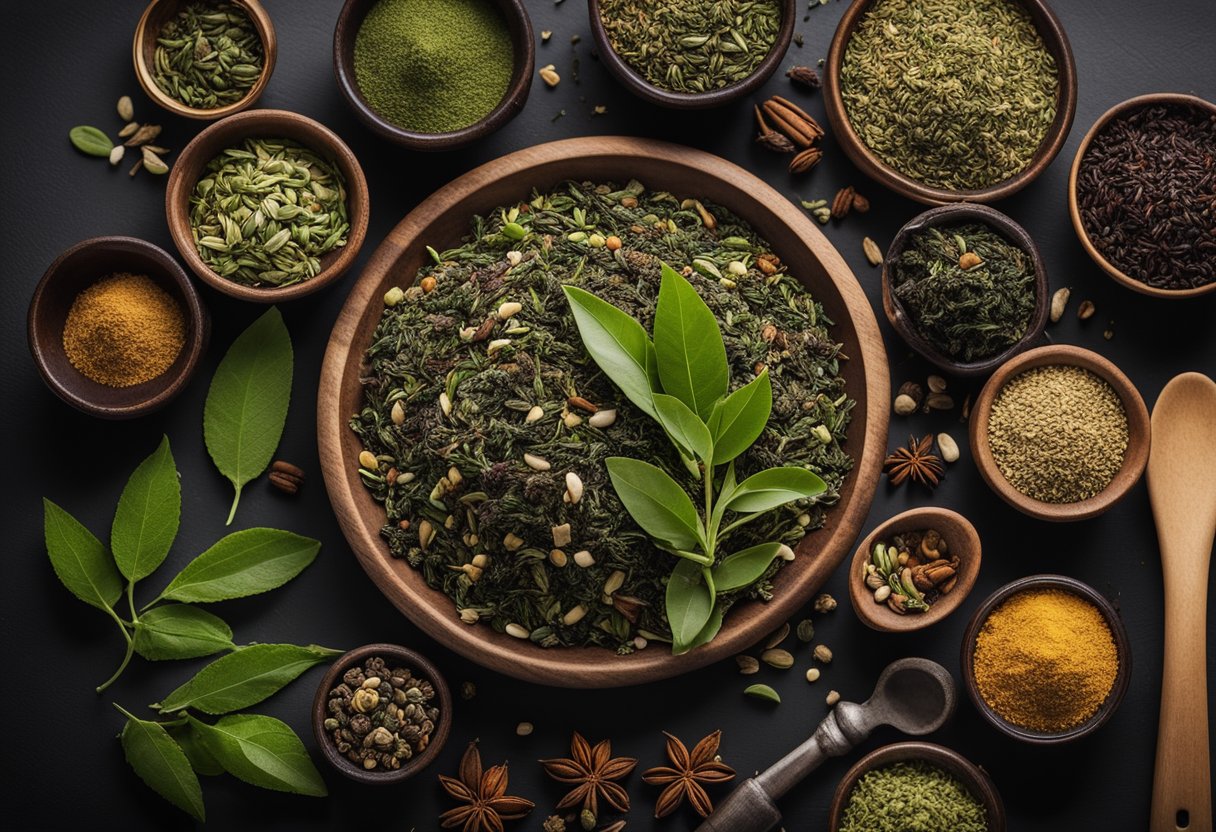
Tea blending is the art of combining different teas to create a unique blend that satisfies the palate of tea drinkers. Blending tea is a complex process that requires a deep understanding of the various teas’ characteristics, including flavor, aroma, and texture. Here are some fundamental aspects of tea blending.
Flavor Profiles
Flavor is the most critical aspect of tea blending. Different teas have unique flavor profiles that can be combined to create a well-balanced blend.
The flavor profile of a tea is influenced by several factors, including the tea plant’s cultivar, growing conditions, processing techniques, and storage.
Blending tea requires a deep understanding of each tea’s flavor profile. Some teas have a strong, bold flavor, while others have a delicate and subtle flavor.
A skilled tea blender knows how to balance the flavors of different teas to create a harmonious blend.
Aroma Considerations
Aroma is another critical aspect of tea blending. The tea plant’s cultivar influences the aroma of tea, growing conditions, processing techniques, and storage.
The aroma of a tea can be floral, fruity, earthy, or spicy, among others.
When blending tea, a tea blender must consider the aroma of each tea. The aroma of each tea must complement the other teas in the blend to create a pleasant and well-rounded aroma.
Texture and Mouthfeel
Texture and mouthfeel are also essential aspects of tea blending. The texture of a tea refers to its physical properties, such as the size and shape of the leaves. The mouthfeel of a tea relates to how the tea feels in the mouth, such as its thickness or astringency.
A skilled tea blender can balance the texture and mouthfeel of different teas to create a smooth and enjoyable blend.
Some teas have a smooth, creamy texture, while others have a rougher texture. A skilled tea blender can balance the different textures to create a well-rounded blend.
In conclusion, tea blending is a complex process that requires a deep understanding of the various teas’ characteristics, including flavor, aroma, and texture. A skilled tea blender can create a unique blend that satisfies the palate of tea drinkers.
The Blending Process
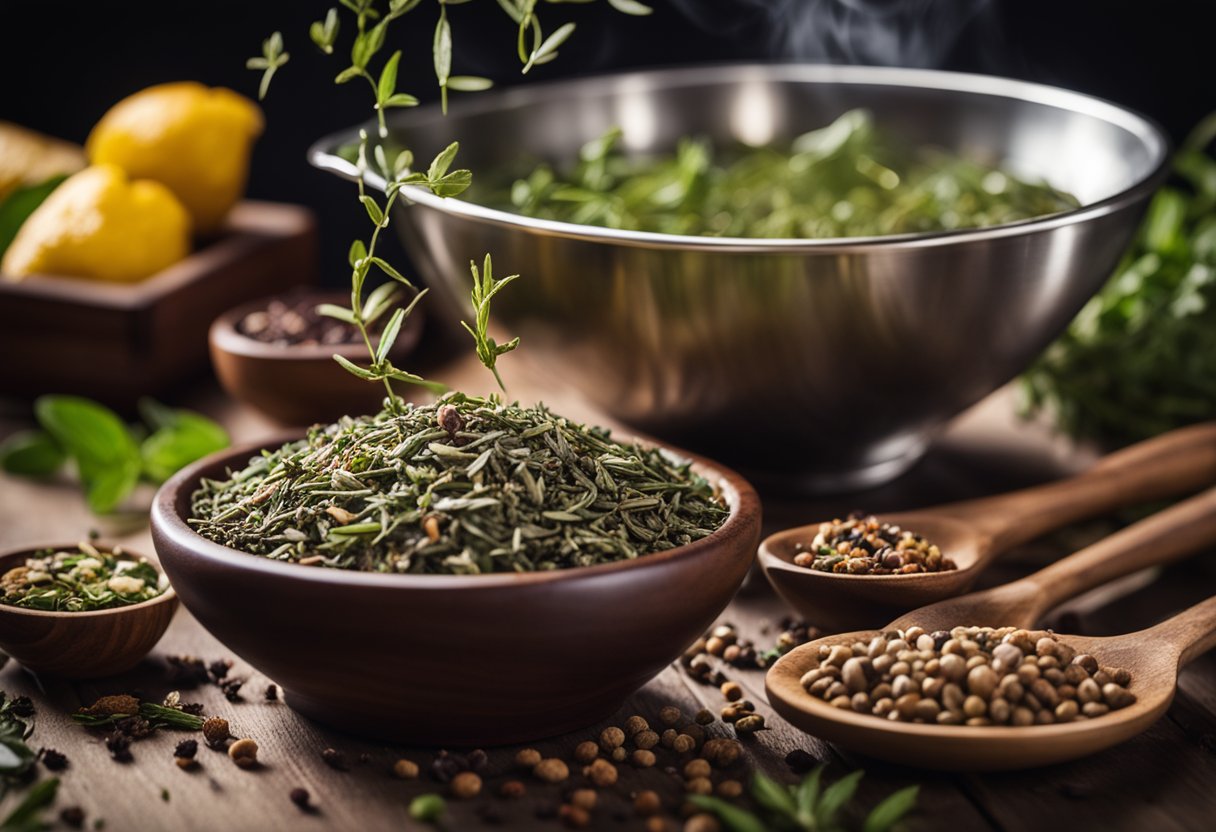
Tea blending is a complex process that involves selecting ingredients, determining proportions and measurements, and using various mixing techniques to create the perfect blend. Here’s a breakdown of each step.
Selecting Ingredients
The first step in tea blending is selecting the right ingredients. Blenders must choose high-quality tea leaves, herbs, and other flavorings that complement each other.
They may also consider each ingredient’s origin, season, and processing methods to ensure consistency and flavor.
Proportions and Measurements
Once the ingredients are selected, blenders must determine each ingredient’s proportions and measurements.
This requires careful experimentation and testing to achieve the desired flavor profile. Blenders may use tools such as scales and measuring spoons to ensure accuracy.
Mixing Techniques
Finally, blenders must use the right mixing techniques to combine the ingredients and create a consistent blend.
This may involve using machines or hand mixing. The goal is to ensure that each ingredient is evenly distributed throughout the blend and that the final product is consistent in flavor and appearance.
Overall, the blending process is a crucial step in creating high-quality tea blends. Blenders can create unique and flavorful teas that will delight tea lovers everywhere by carefully selecting ingredients, determining proportions and measurements, and using the right mixing techniques.
Packaging and Storage
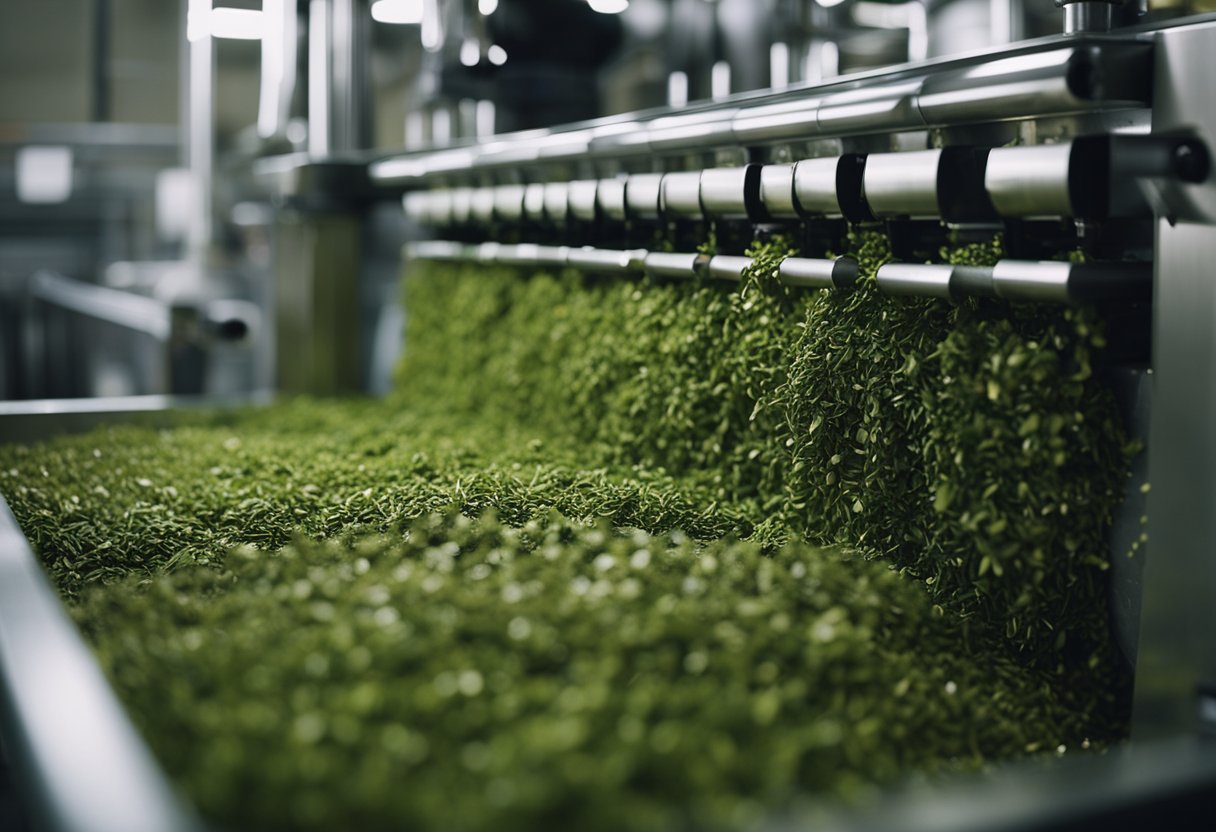
Tea blending is an art that requires precision and care. Packaging and storage are critical aspects of the tea blending process. Proper packaging and storage help preserve the tea’s freshness, aroma, and flavor.
Preserving Freshness
Tea is a delicate product that can quickly lose its freshness if not stored correctly. Keeping it away from light, heat, moisture, and air is essential to preserve its freshness.
Tea should be stored in a cool, dry, and dark place. It is recommended to store tea in an airtight container to prevent it from absorbing moisture and odors from the surroundings.
Container Types
The container used for storing tea is also crucial.
Different containers, including metal tins, glass jars, and plastic containers, are available.
Metal tins are the most popular choice for tea storage. They are airtight and protect the tea from light and moisture.
Glass jars are an attractive option but are not airtight, and the tea can lose its freshness quickly.
Plastic containers are not recommended for tea storage as they can absorb odors and flavors from the surroundings.
Labeling and Branding
Labeling and branding are essential aspects of tea packaging.
The label should include the name of the tea, the type of tea, and the origin of the tea. Brewing instructions, caffeine content, and any other relevant information are also recommended.
The branding of the tea should reflect its quality and uniqueness. A well-branded tea can attract more customers and increase sales.
Proper packaging and storage are critical to maintaining the quality and freshness of tea. By following these guidelines, tea blenders can ensure they stay fresh and flavorful for a long time.
Health Benefits and Concerns
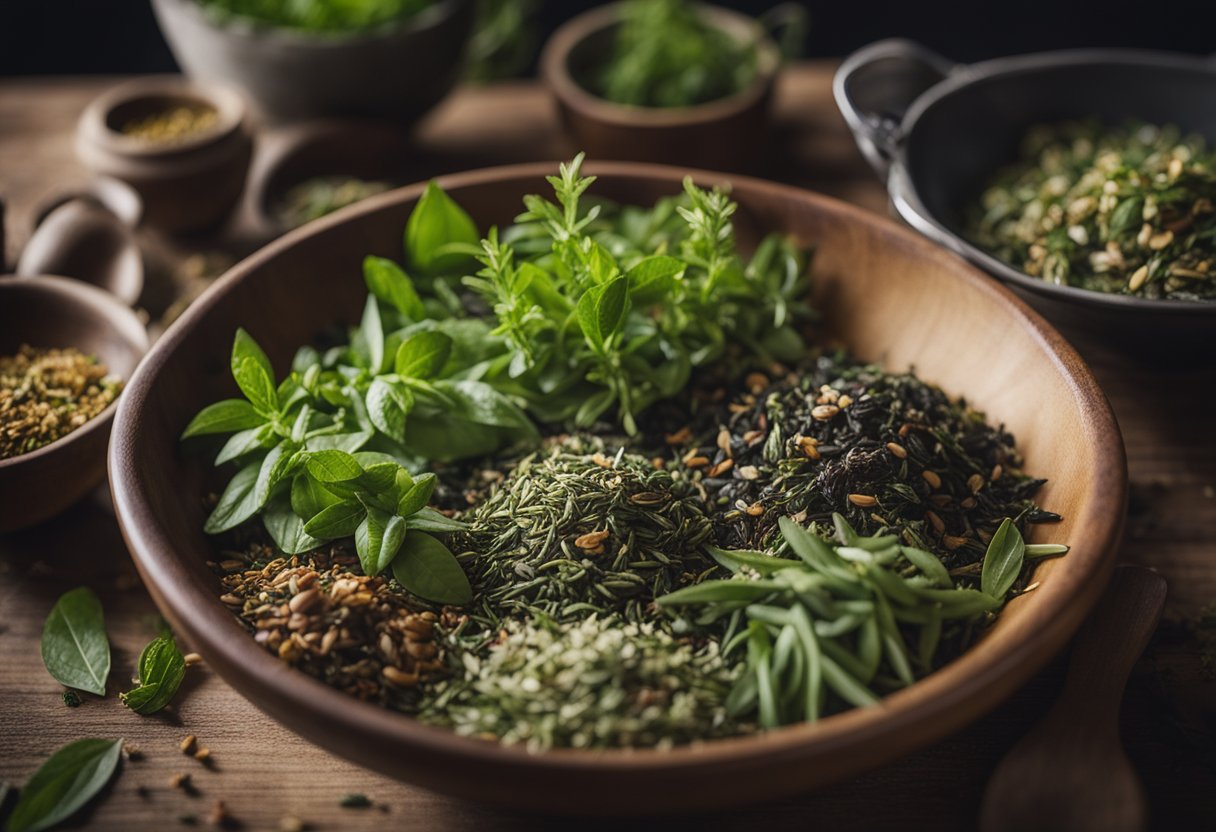
Antioxidant Properties
Tea is known for its high antioxidant properties, which help to protect the body against damage from free radicals.
Antioxidants are important for maintaining good health and preventing chronic diseases like cancer, heart disease, and stroke.
Green tea, in particular, is rich in catechins, an antioxidant that has been shown to have anti-inflammatory and anti-cancer properties.
Caffeine Content
Tea contains caffeine, a natural stimulant that can help increase alertness and concentration. However, the amount of caffeine in tea can vary depending on the type and how it is brewed.
Black tea generally has the highest caffeine content, while green tea has less caffeine.
It is important to note that excessive caffeine consumption can cause negative side effects such as anxiety, insomnia, and increased heart rate.
Allergen Information
Tea is generally considered safe for most people to consume, but some individuals may have allergies or sensitivities to certain types of tea.
For example, some people may be allergic to chamomile tea, which can cause allergic reactions such as hives, swelling, and difficulty breathing.
Please read tea labels carefully and consult with a healthcare professional if you have any concerns about allergies or sensitivities.
Tea Blending as a Business
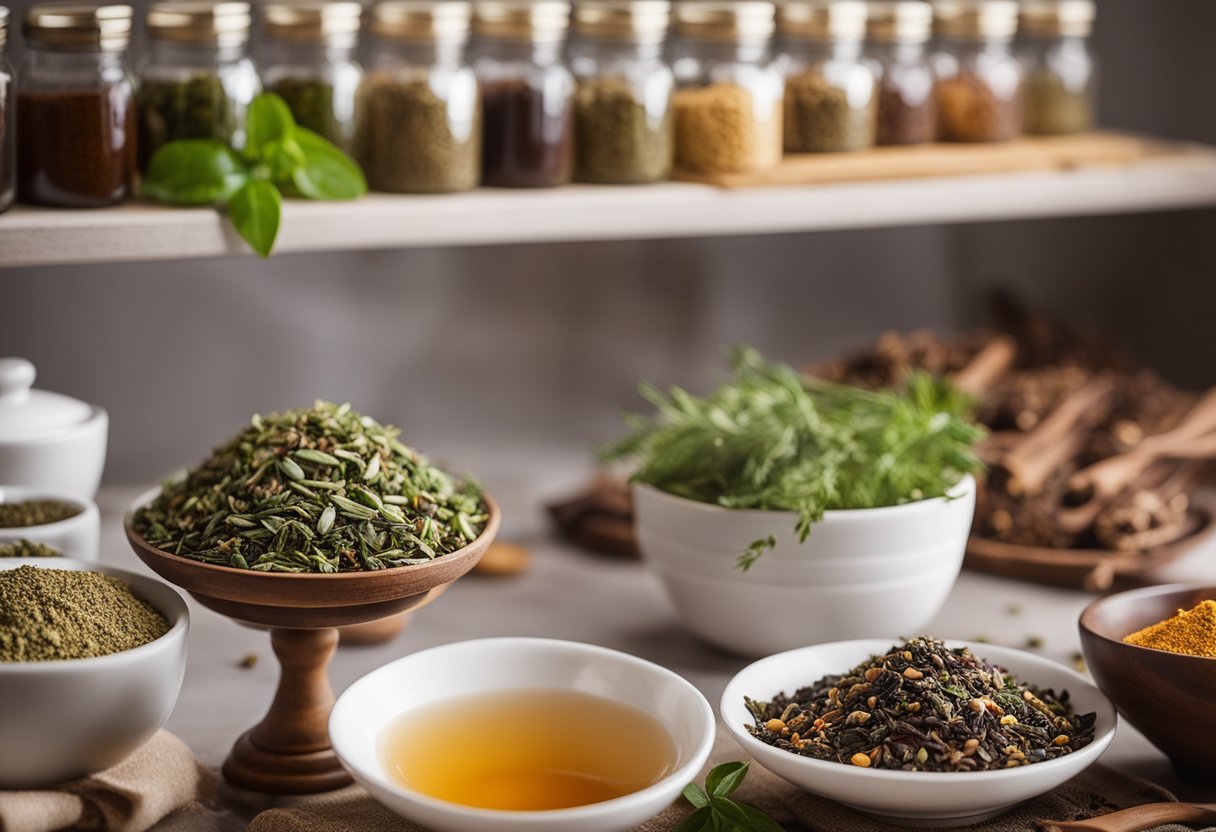
Tea blending is a popular and profitable business with a growing market worldwide.
It involves the mixing of different types of tea leaves to create unique and flavorful blends. Blending tea is an art that requires skill, knowledge, and experience.
Market Trends
The tea blending industry is growing rapidly, and new tea blends and flavors are introduced yearly.
The demand for high-quality, organic, and fair-trade tea blends is rising. Consumers are becoming more health-conscious and are looking for natural and healthy alternatives to traditional beverages.
Customer Preferences
Customer preferences play a crucial role in the tea blending business.
Blenders must know the latest trends and customer demands to create successful blends.
Some popular tea blends include herbal, fruit, and flavored teas. Customers may also prefer blends that are low in caffeine or have specific health benefits.
Regulatory Compliance
Tea blending businesses must comply with various regulations and standards to ensure the safety and quality of their products.
The Food and Drug Administration (FDA) regulates tea blending businesses in the United States. Blenders must follow Good Manufacturing Practices (GMP) and adhere to labeling requirements.
In conclusion, tea blending is a profitable and growing business that requires skill, knowledge, and compliance with regulations. Blenders must know market trends and customer preferences to create successful blends. Tea blending can be a successful and rewarding business venture with the right approach and attention to detail.
DIY Tea Blending at Home
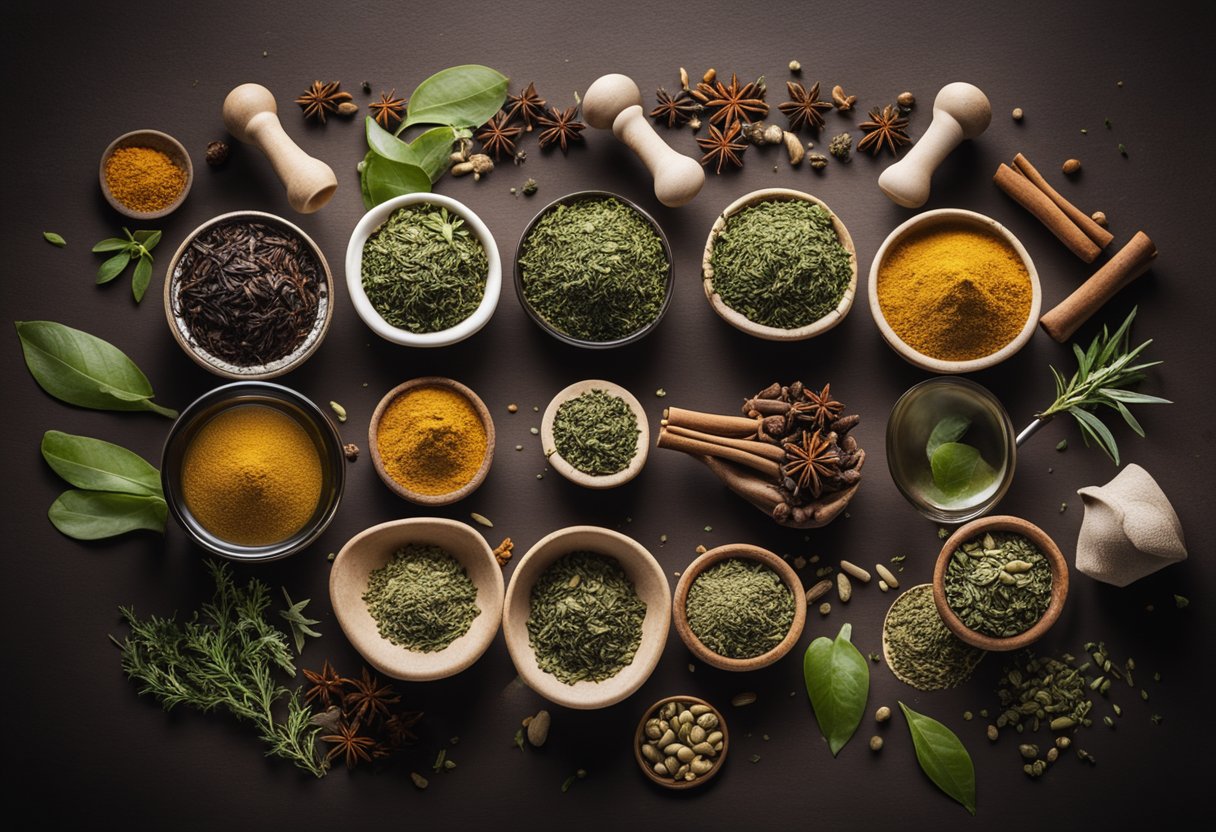
Tea blending is an art that can be mastered with practice and experimentation. It allows you to create unique blends that cater to your taste and preferences.
You can start blending your tea at home with a few basic tools and equipment.
Basic Tools and Equipment
To get started with tea blending, you’ll need the following tools and equipment:
- A set of measuring spoons and cups
- A kitchen scale
- A tea infuser or strainer
- A mixing bowl
- Airtight containers for storing your blends
Make sure to measure your ingredients accurately to ensure consistent flavor and strength.
A kitchen scale is especially useful when working with small quantities of ingredients. Meanwhile, a tea infuser or strainer will help you remove loose tea leaves or herbs from your blend, ensuring a smooth and enjoyable cup of tea.
Recipes and Experimentation
Once your tools and equipment are ready, it’s time to experiment with different blends.
Here are a few recipes to get you started:
- Earl Grey Vanilla: Mix 2 parts black tea with 1 part vanilla beans and 1 part bergamot oil. Steep the mixture for 3-5 minutes.
- Minty Green: Mix 2 parts green tea with 1 part peppermint leaves and 1 part spearmint leaves. Steep the mixture for 2-3 minutes.
- Chai Spice: Mix 2 parts black tea with 1 part cinnamon, 1 part cardamom, and 1 part ginger. Steep the mixture for 3-5 minutes.
Don’t be afraid to experiment with different ratios and ingredients to create your unique blends.
Keep track of your recipes and note what worked and what didn’t.
You can create blends that suit your taste with time and practice.
In conclusion, tea blending is a fun and rewarding activity that can be done at home with basic tools and equipment.
You can create unique flavors that cater to your taste and preferences by experimenting with different blends.
More From Tea Jubilee
How to make your own tea blends
how to make your own tea blend right at home. (Video)
That is all for today. Thank you for reading about tea blending! I hope you enjoyed this post. If you want to learn more, check out the links above for more from Tea Jubilee on Tea blending. I also love to hear feedback on my posts on this website. So feel free to comment below on what you think about Tea Blending. Does it sound fun? Do you want to try it out now? Let me know.
Have a great day!


